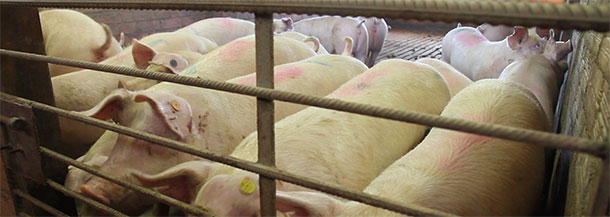Objective
The aim of this trick is to identify quickly and practically, the age of piglets and pigs just by looking at the color of their ear tag.

Tip description
Many farms use source identification systems for the identification of piglets (ear tags, tattoos, etc....) and the most widely used system are the ear tags.
Normally all animals use exactly the same color, although some farms use different ear tags for males and females. On this farm a different color ear tag is used for each week of birth: white, red, blue, violet, yellow, pink, etc.
This way you can know quickly just by looking at them, how old the pigs are.
There can be various uses for this, but mainly I can think of two:
1. In pedigree breeding (or on farms with auto-replacement), it serves to determine the actual age of gilts when they are being adapted to meet the minimum age required for mating (and not just the target weight).

Here are some gilts in gestation pens, bearing large (yellow) ear tags the with the sow number on it, but they still retain the round ear tag given at birth. We can see a blue one, an orange one and a yellow one.
2. On commercial farms this system may be useful for identification if you are mixing animals of different ages, especially in farrowing and nursery. And also to be able to see at a glance, without having to consult the lot, the age at which animals are reaching the slaughterhouse. Many times it is normal to see two colors in a pen because they can be piglets from farrowing on two consecutive days, but there is usually one predominant color.
Here you can see the piglets in the nursery. How many ear tag colors you see in the picture?
The cost of this practice is zero, at least on farms that are already using ear tags to identify individual piglets.









